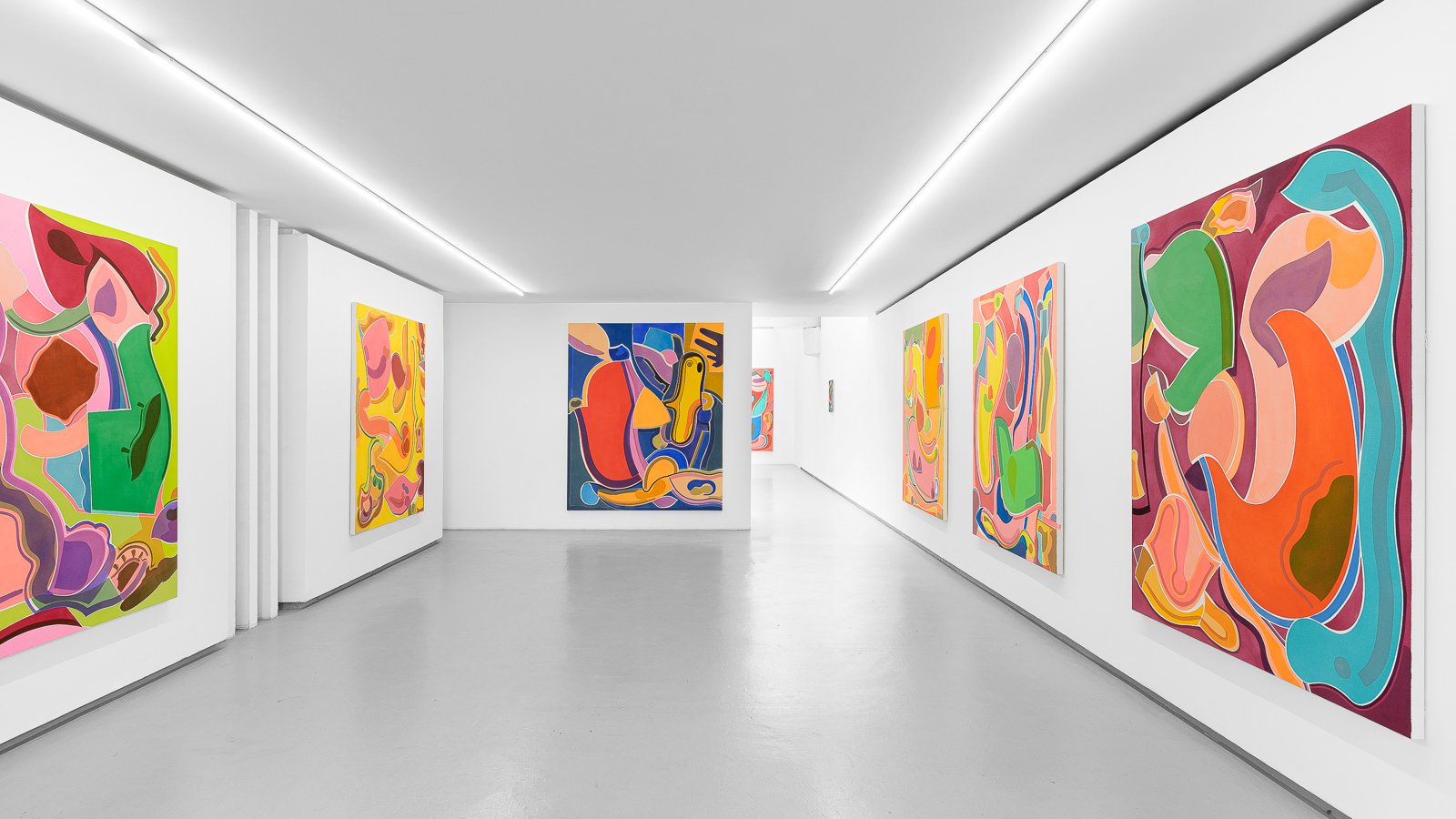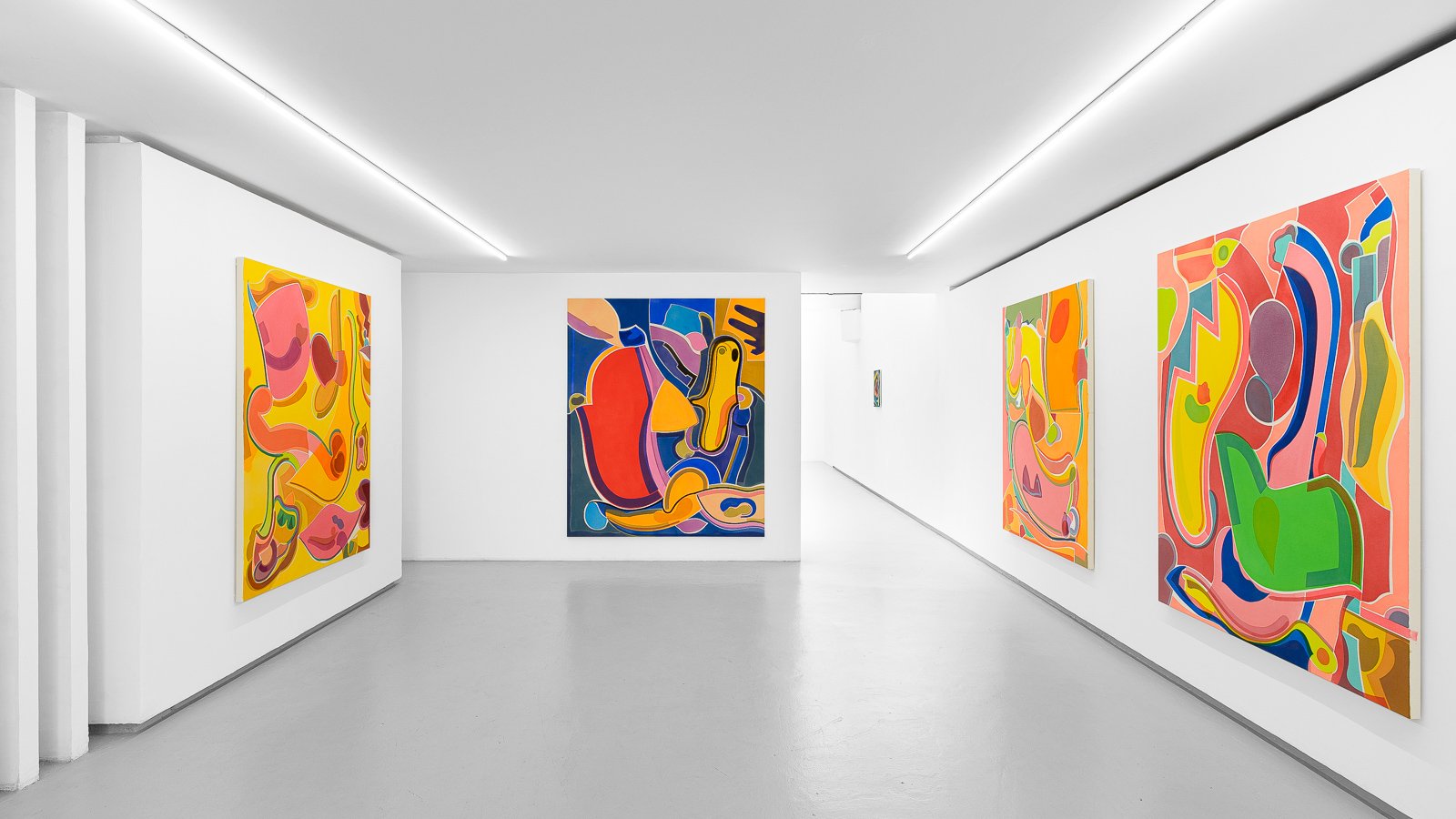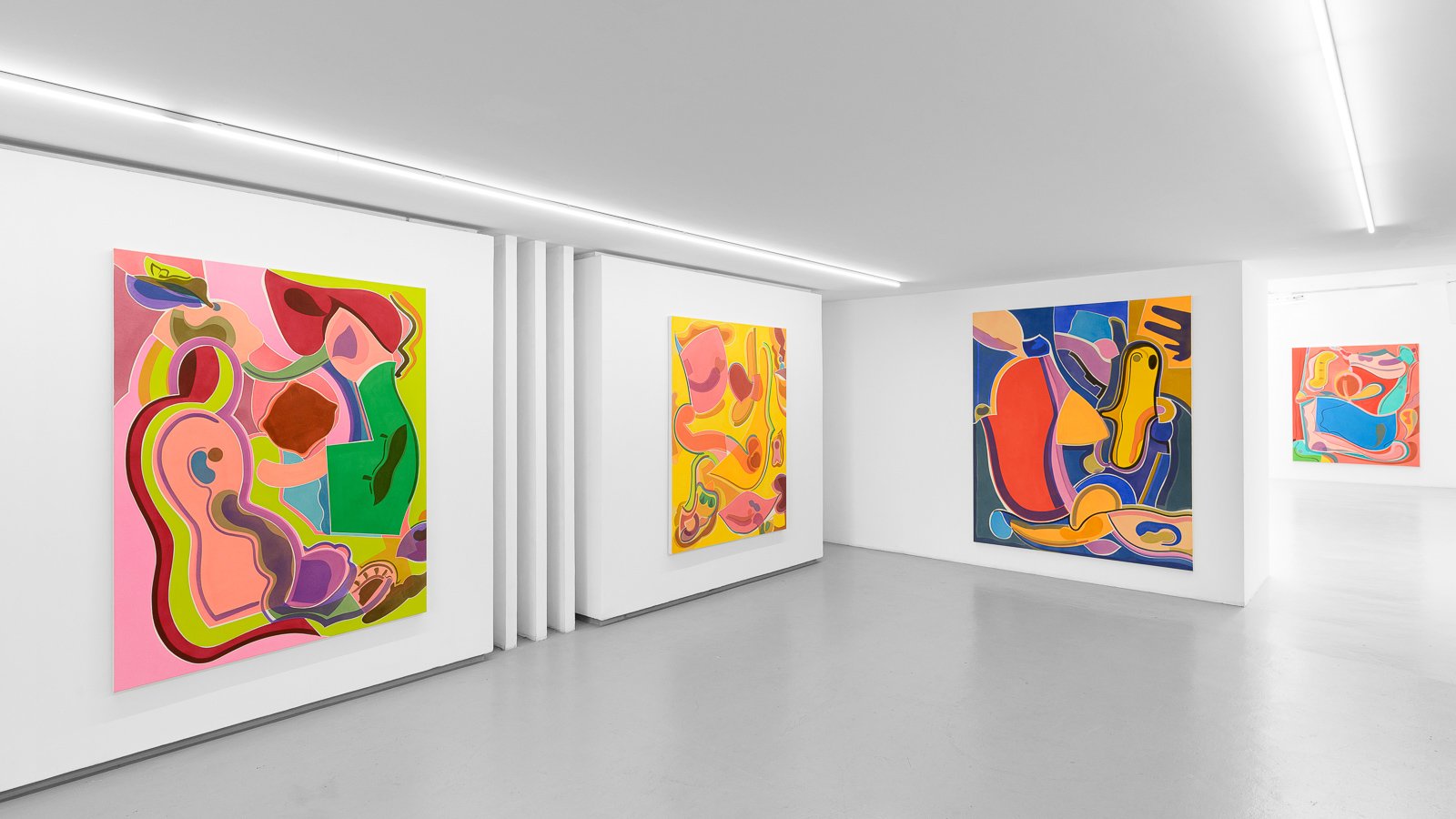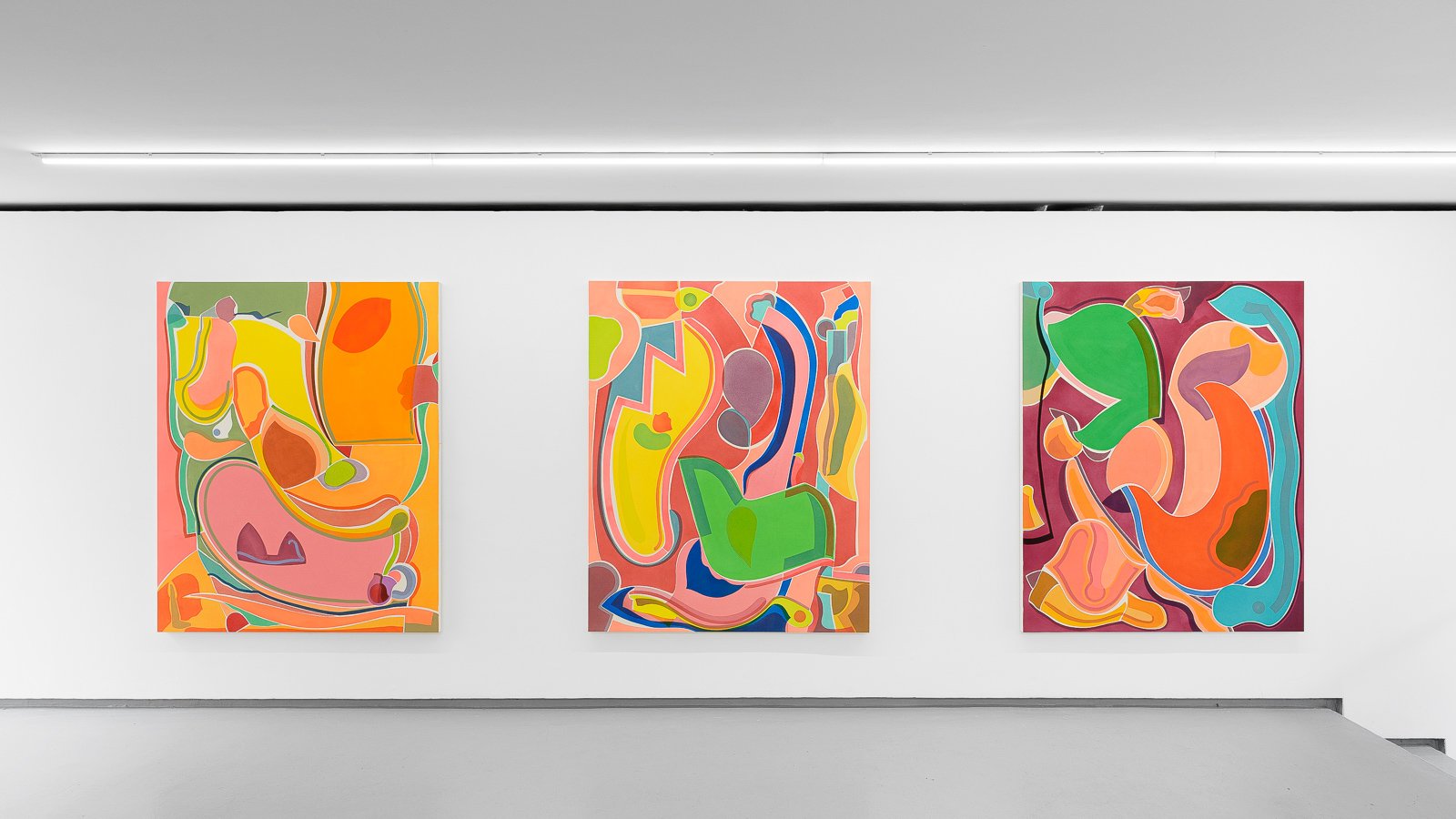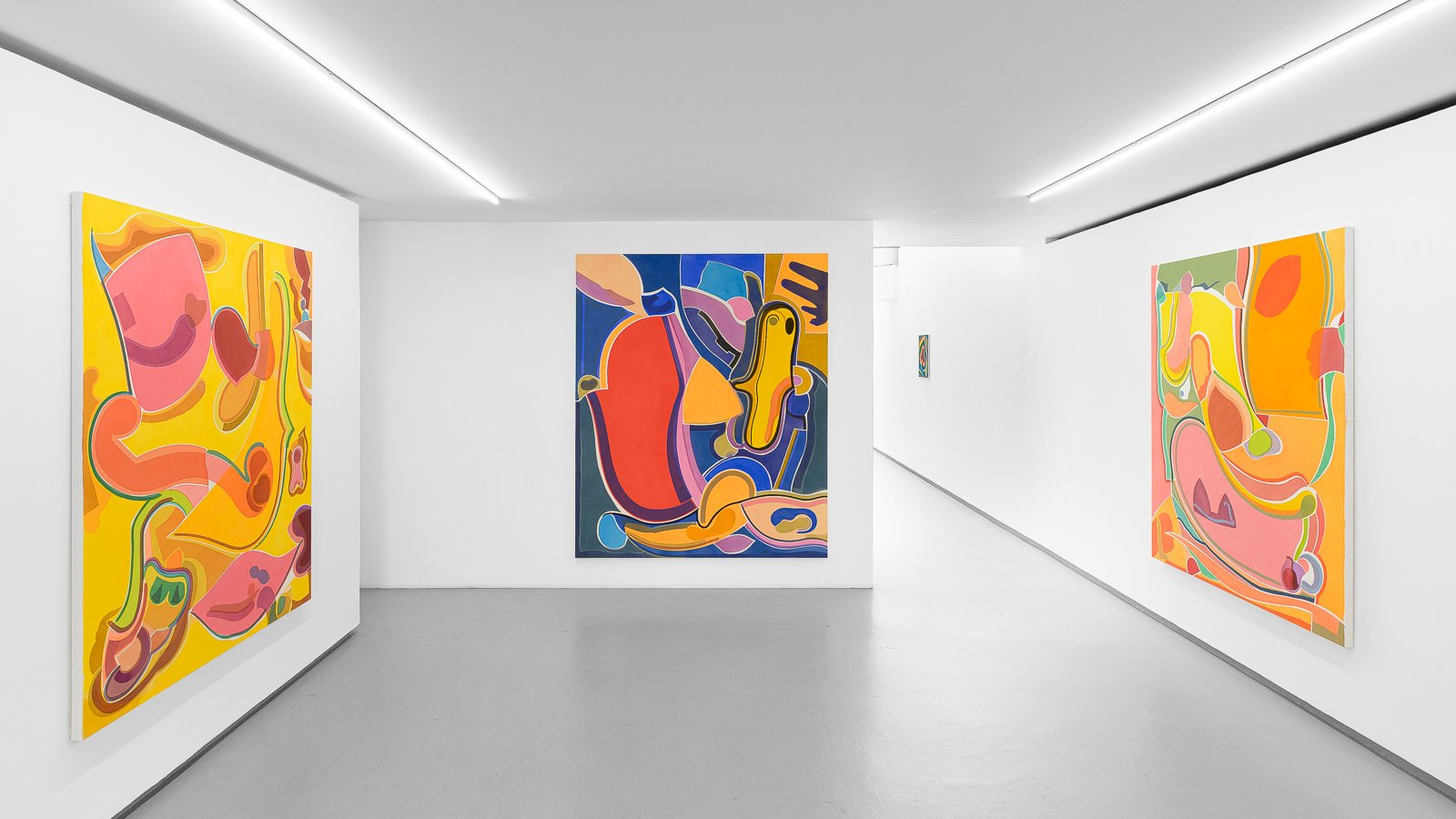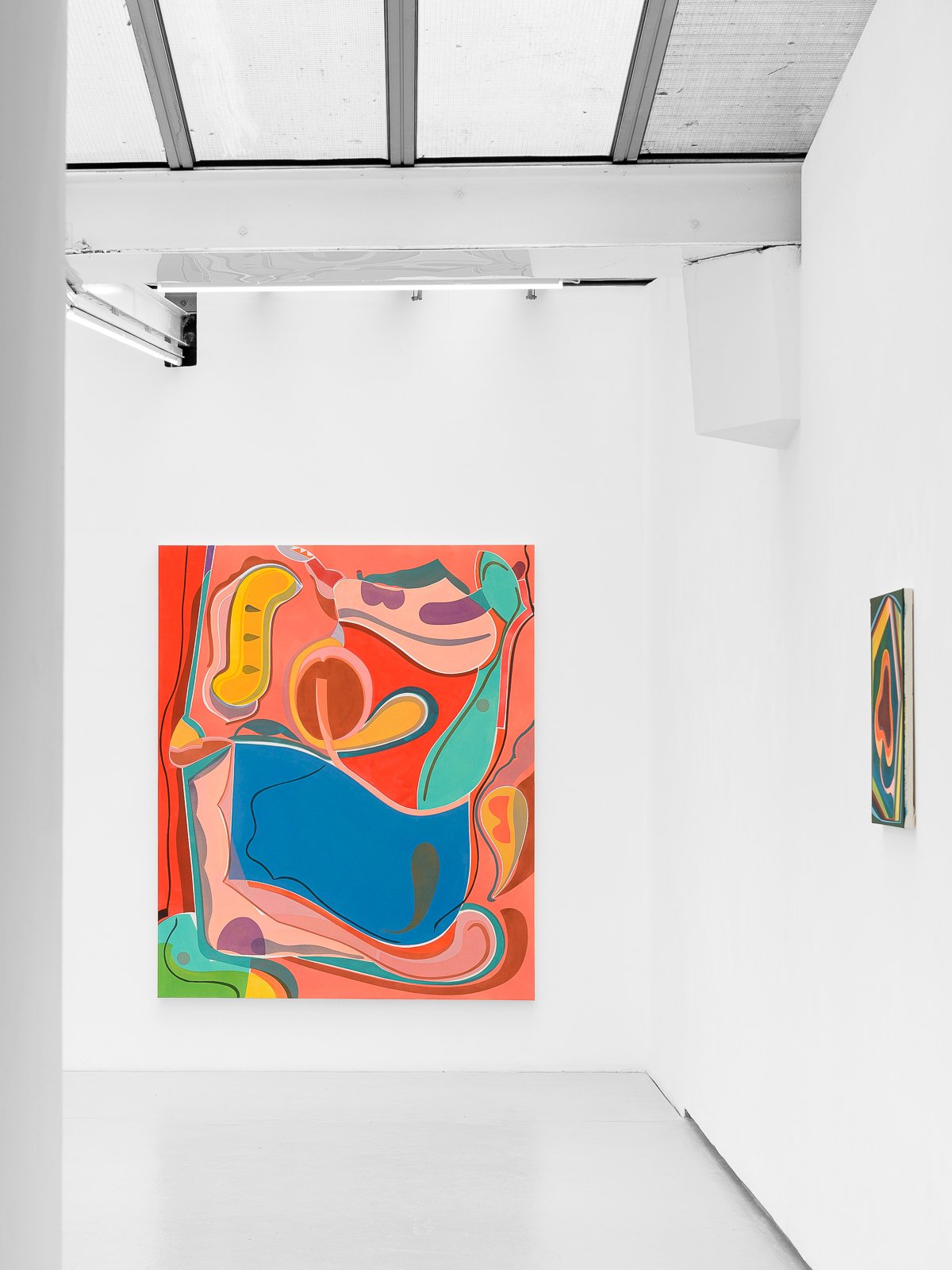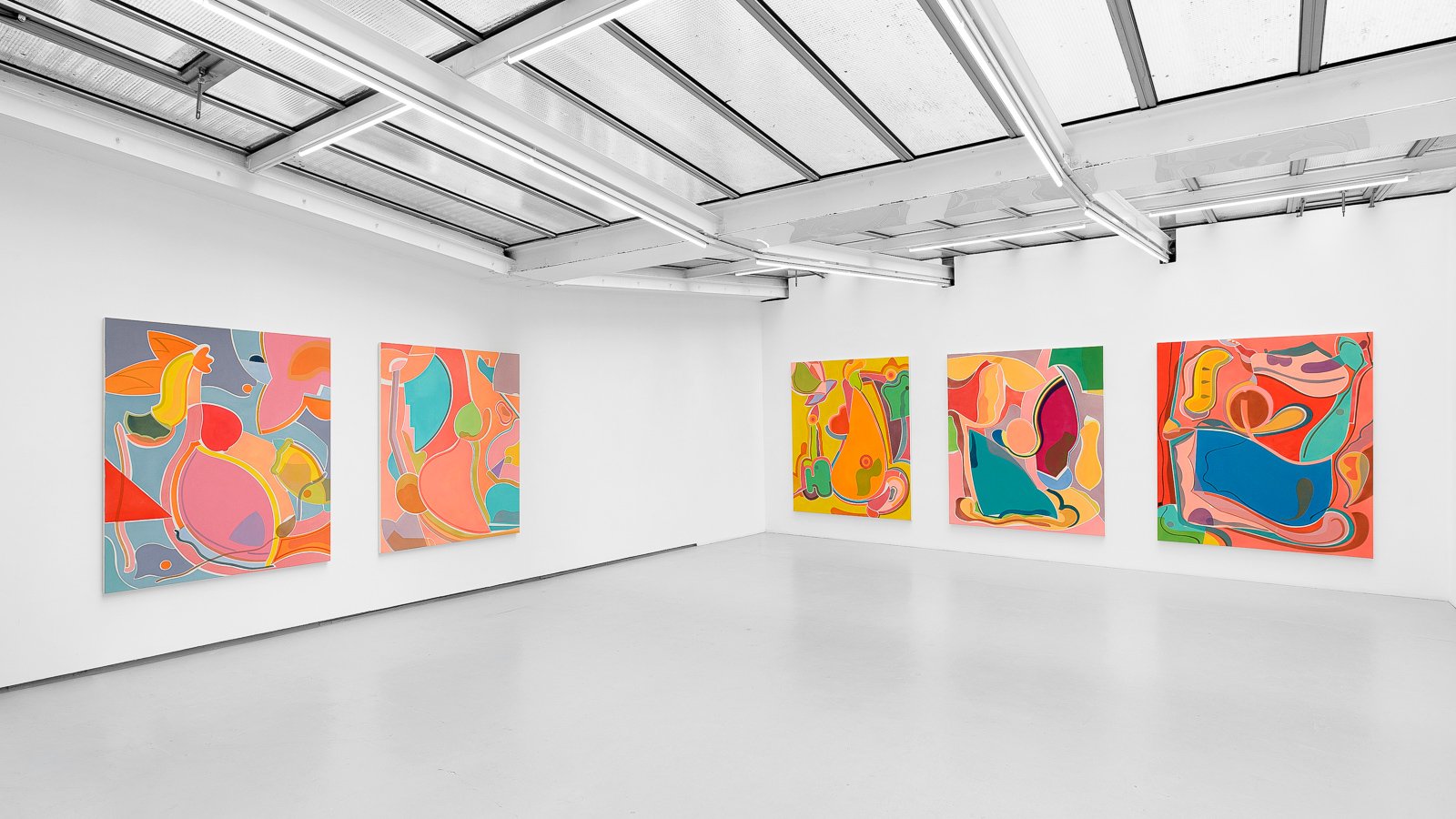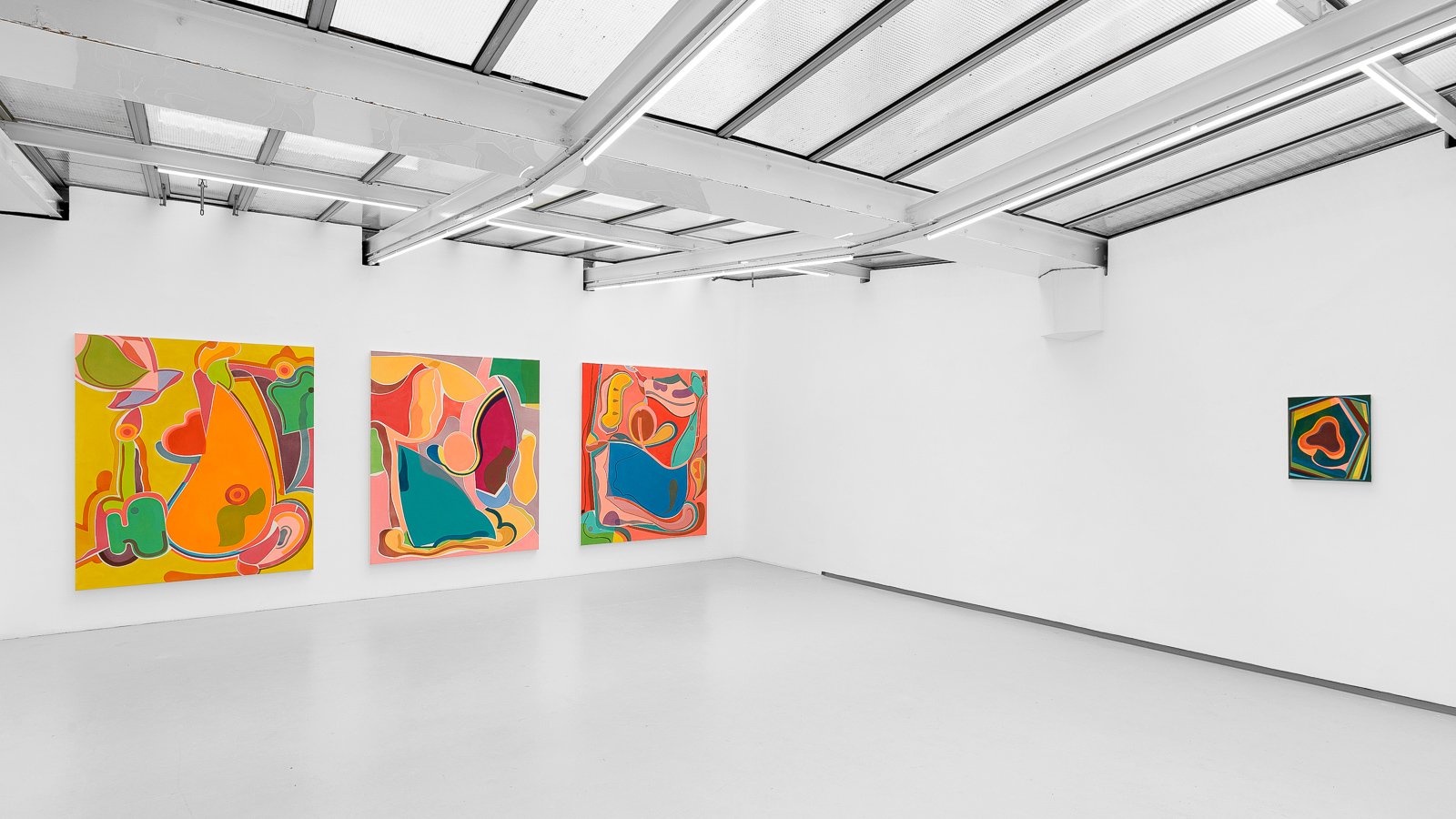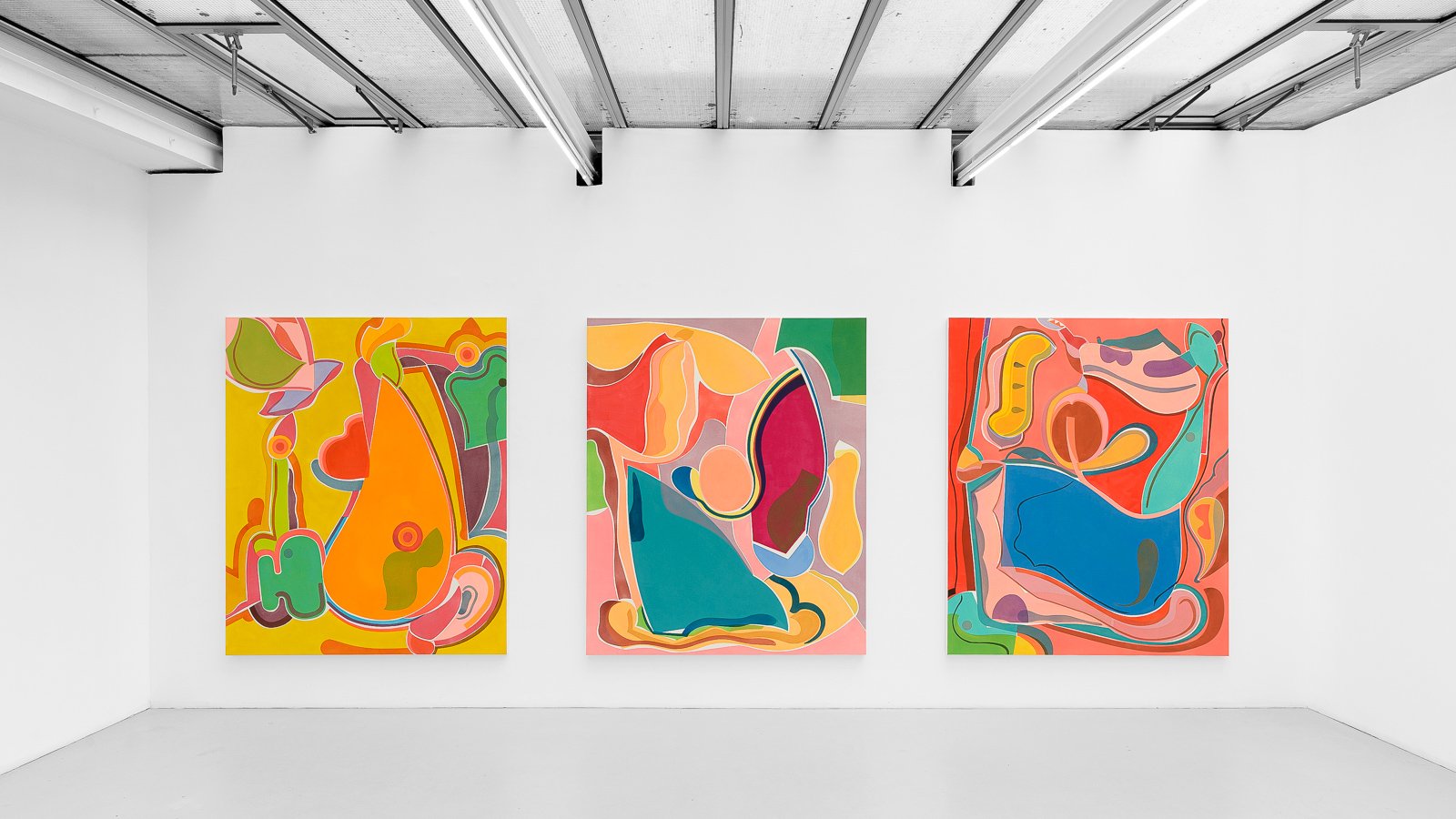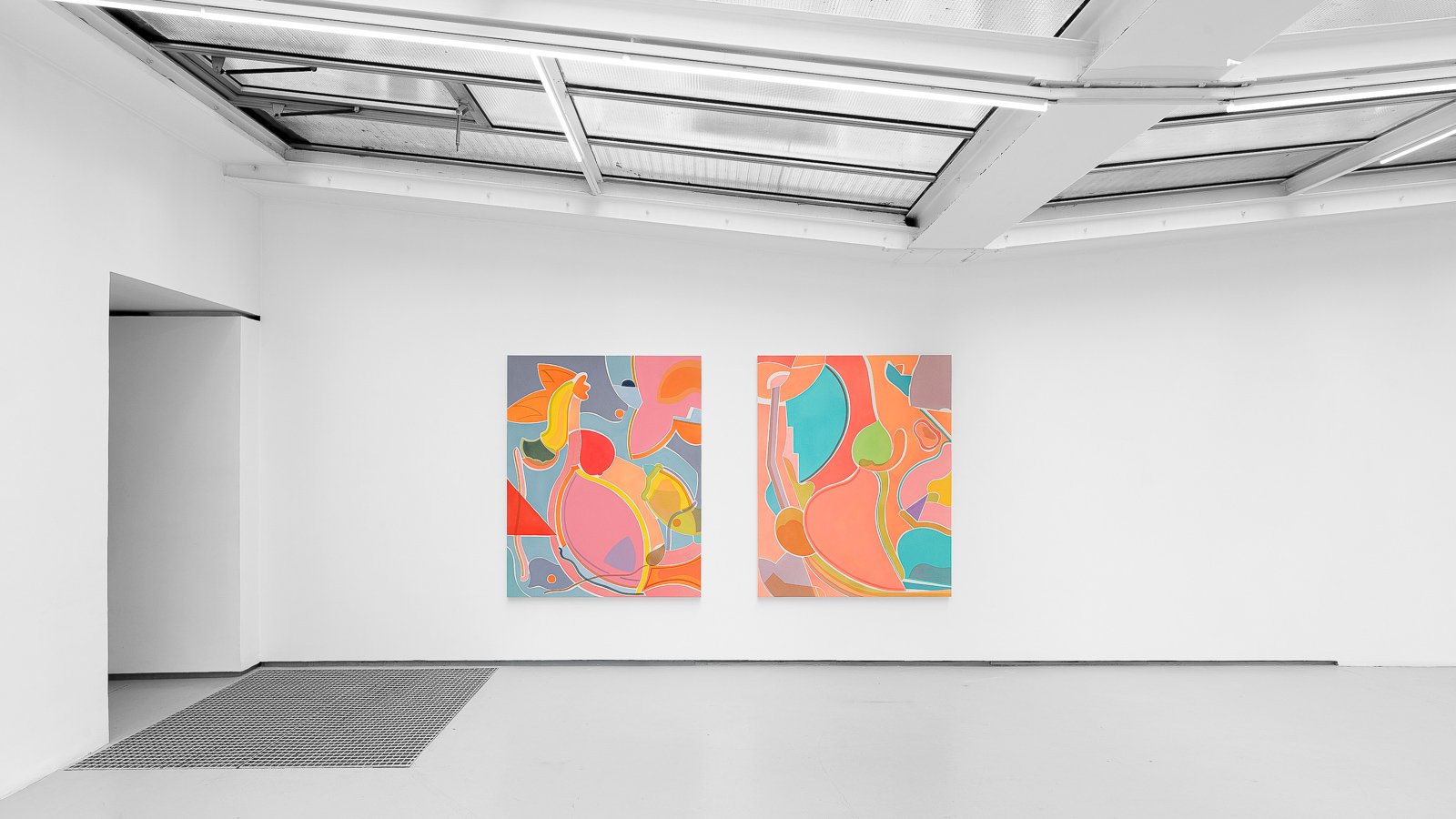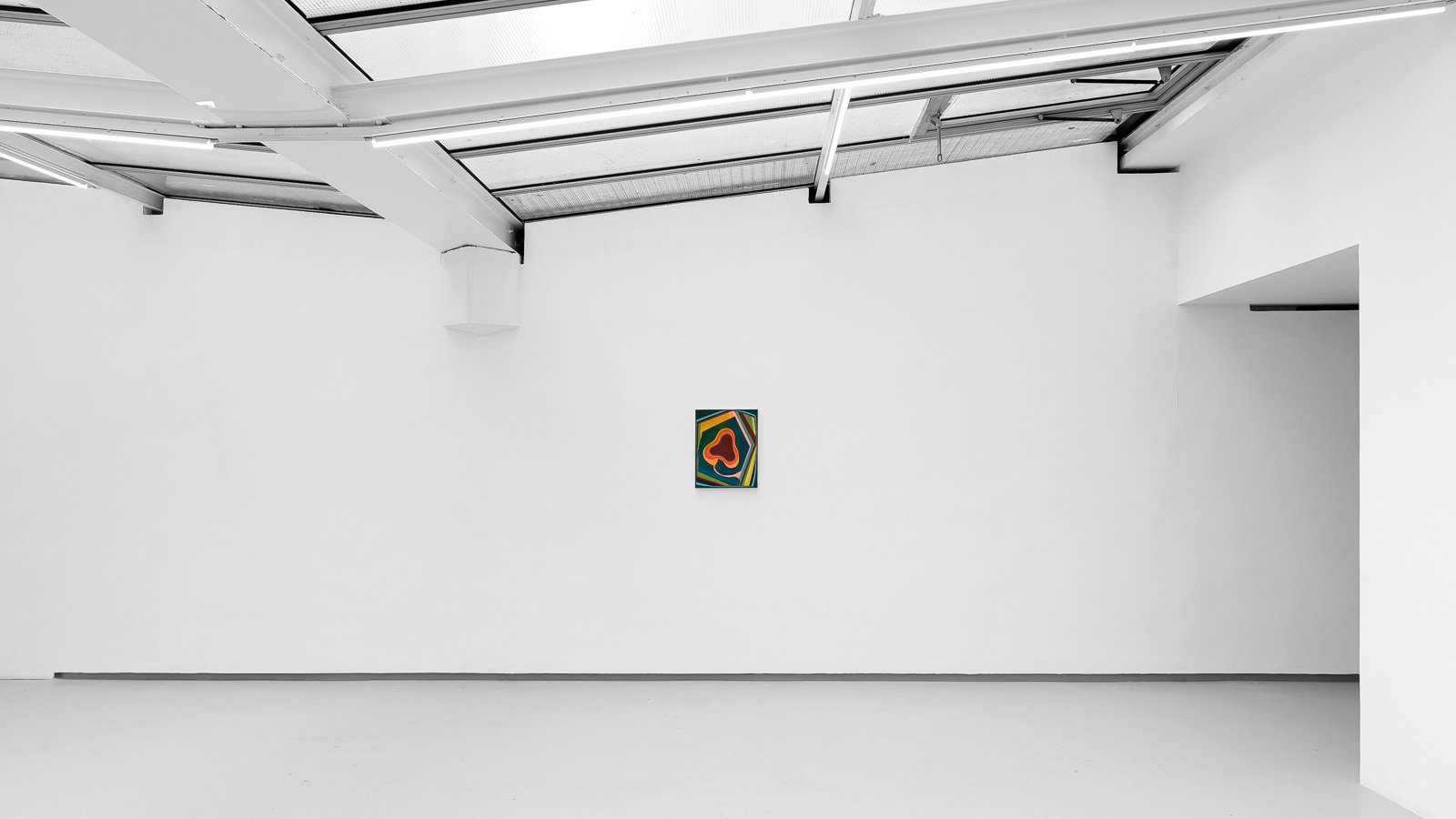Auto Mato
Du 29 avril au 10 juin 2023
Vernissage le 29 avril de 14h à 21h.
The conversation hadn’t gotten off to a good start.
As I stepped out of the elevator, struck by the fifteen floors it took to reach his studio, I mentioned the airy quality of his paintings. He didn’t respond but something in his gaze, in his tone of voice, dimmed.
A few minutes later, I expressed a rather vague idea more or less comparing his gesture to that of a child trying to cover up the lines of the marker used for coloring in an image. He seized on the word “coloriage”—coloring in—later on in the afternoon to firmly distance himself from that.
All the technique he made use of specifically prevented the painter from “coloring in”; he applied the color to the cotton without any priming and without any preliminary design; the color and the form emerged together from the same gesture, and there was no going back over it.
The translucency of the medium he used made backing down or doubling down unfeasible; he only ever painted over a spot again to create a new shape. Any coloring in would make the painting disappear, drowned by the sheer excess of color: the shape would go under and he would have to toss the canvas.
As humiliated as I was by my total misunderstandings, I smiled and didn’t let it show. I wished I could leave, or not have come in the first place, but he, clearly stung by my missteps, was the one to disappear from the studio for a long stretch. The painter left.
9 rue Saint gilles 75003 Paris philippe@galeriechezvalentin.com www.galeriechezvalentin.com
No sooner had he turned his back than I was finally able to see the paintings without trying to say something intelligent, without trying to understand why they were so alive. After a few minutes, before my eyes, they changed; I wasn’t moving anymore, absorbed as I was by the sight of their subtle metamorphosis. The colors moved within the image, as the light declined in the sky, but by a logic that wasn’t entirely the sun’s.
Because nothing had been sketched out beforehand, because his colors were fluids, his works shifted. Because the painter wasn’t there, I could see it: the paintings were autonomous, self- sufficient. Each had its own singular existence, bound to the format, to the limberness of the painter’s hand as much as to the cotton and the air’s weight.
On sawhorses in the middle of the room was a huge canvas that I hadn’t examined when I’d come in, because, at a fleeting glance, it had looked blank. I was sitting on a rather low chair and my eyes were practically level with the surface, but I could make out that colors were coming out: oranges and greens were literally emerging from the canvas. The finished paintings transmuted on the walls, and this one, lying flat, was literally coming to life in the painter’s absence.
Upon his return, I asked him where he’d been all the while. He couldn’t say, but he allowed that it was owing to this, his absence, that the painting was beautiful. As if the canvas were shy—or was it he who was shy? The artist had devised a very precise and restrictive technique that, paradoxically, freed him from so many subjects that had no bearing on his painting: figuration, drawing, patterns, intent, will, maybe even himself.
The acrylic medium applied to an unprimed canvas, without any lines and without any forethought, allowed the artist to be absent in the moment of painting, as others were in writing or sketching, but where was he then, if he wasn’t there? If he wasn’t there when he painted, was he elsewhere? I asked him again the other day and, without a word, he looked to the sun.
Amélie Lucas Gary
Translated from the French by Jeffrey Zuckerman
La conversation n'a pas très bien commencé.
En sortant de l'ascenseur, impressionnée par les quinze étages à gravir pour accéder à son atelier, j'ai évoqué la dimension aérienne de ses peintures. Il n'a rien dit mais quelque chose s'est éteint dans son regard, dans l'intonation de sa voix.
Quelques minutes plus tard, j'ai exprimé une idée assez floue qui, pour la résumer, comparait son geste à celui d'un enfant s'évertuant à rendre invisibles les traits du feutre avec lequel il colorie. Ce mot, « coloriage », il l'utilisa un peu plus tard dans l'après-midi pour s'en défendre, très fermement.
Toute la technique qu'il a mise en place interdit précisément au peintre de colorier ; il applique la couleur sur le coton sans apprêt et sans dessin préalable : la couleur et la forme jaillissent ensemble par le geste, et il n'est pas question d'y revenir.
La transparence des jus qu'il utilise ne permet aucun repentir, aucune insistance ; il repasse très peu au même endroit, excepté pour créer une nouvelle forme. Si il coloriait, la peinture disparaîtrait, noyée par l'excès même de couleur : la forme sombrerait et lui, il jetterait la toile.
Bien qu'humiliée par les contre-sens évidents que j'avais formulés, souriante, je n'ai rien laissé paraître. J'aurais aimé partir, ou n'être jamais venue, mais c'est lui qui, certainement échaudé par mes maladresses, a disparu un long moment de l'atelier. Le peintre s'est absenté.
9 rue Saint gilles 75003 Paris philippe@galeriechezvalentin.com www.galeriechezvalentin.com
A peine a-t-il eu tourné le dos, qu'enfin j'ai pu voir les peintures, sans chercher à dire quelque chose d'intelligent, sans chercher à comprendre pourquoi elles étaient si vivantes. Au bout de quelques minutes, sous mes yeux, elles se sont transformées ; moi je n'ai plus bougé, absorbée par le spectacle de leur mue discrète. Les couleurs se déplaçaient dans le tableau, en même temps que la lumière descendait dans le ciel, mais selon une logique qui n'était pas tout à fait celle du soleil.
Parce que rien n'avait été dessiné au préalable, parce que ses couleurs sont des fluides, ses oeuvres sont instables. Parce que le peintre n'était pas là, je pouvais le constater : les peintures sont autonomes ; chacune a son existence propre et singulière, liée au format, à la souplesse de la main du peintre, autant qu'au coton et au poids de l'air.
Sur des tréteaux, au milieu de la pièce, était posée une grande toile que je n'avais pas regardée en arrivant, parce que du coin de l'oeil, elle m'avait semblé vierge. J'étais assise sur un fauteuil assez bas et je ne voyais la surface qu'à fleur, suffisamment pourtant pour constater que des couleurs venaient: des oranges et des verts sortaient littéralement de la toile. Les peintures achevées se modifiaient sur les murs, et celle-là, allongée, prenait littéralement vie en l'absence du peintre.
Quand il est revenu, je lui ai demandé où il avait été tout ce temps. Il n'a pas su me répondre mais il a dit que c'était à cette condition, celle de son absence, que la peinture était belle. Comme une pudeur de la toile, ou bien était-ce la sienne ? L'artiste a élaboré une technique très précise et contraignante qui paradoxalement l'a libéré de beaucoup des sujets qui ne concernaient pas sa peinture : la figuration, le dessin, le motif, les intentions, sa volonté, et peut-être lui-même.
Les jus d’acrylique appliqués sur une toile sans apprêt, sans traits, et sans programme, autorisent l'artiste à s'absenter au moment de peindre, comme d'autres l'ont fait pour écrire ou pour dessiner, mais où est-il alors, s'il n'est pas là ? S'il n'est pas là quand il peint, est-il ailleurs ? Je lui ai de nouveau posé la question l'autre jour, et sans rien dire, il a regardé dans la direction du soleil.
Amélie Lucas Gary
